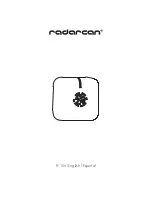
Cadex C5100 Battery Tester User Guide
Charging and Discharging Lithium-ion (Li-ion)
Batteries
Lithium-ion (Li-ion) batteries are safe when used as directed.
Battery safety cannot be assured when a battery pack is built with
individual cells of an unknown nature with a series and parallel
connection. Not all Li-ion cells are suited for multi-cell packs.
Only cells that meet tight voltage and capacity tolerances can be
used for series and parallel connection. Mismatched packs are
subject to overcharge resulting in venting with flame and fire.
Check with the cell manufacturer to see if the cells are suitable for
multi-cell packs.
In the past, single Li-ion cells were only available to authorized
battery manufacturers. Today, imports are becoming readily
available and often fall into the hands of the inexperienced. While
most brand name cells are equipped with an internal cell
disconnect that permanently opens the current path on high
pressure, some brands do not provide this safeguard. Many
brands don’t use a separator that shuts down the battery when
high temperatures are reached. The internal safety features are
omitted for cost reasons.
Please follow the following guidelines when charging and
discharging lithium-ion cell(s) and packs. Failing to follow
these rules could result in venting with flame, explosions, fire,
and personal injury.
x
Never connect cells in parallel and/or series that are not
designed for that purpose. A cell mismatch may overcharge
and vent with flames
x
Never charge or discharge the battery without connecting a
working protection circuit. Each cell must be monitored
individually and the current disconnected if an anomaly
occurs.
x
Never leave the battery unattended while under charge or
discharge.
Always attach a temperature sensor when charging and
discharging the battery. The temperature sensor must
disconnect the current on excess temperature.
Only connect cells that are matched and have the identical
state-of-charge.
©
2009 Cadex Electronics Inc
7








































